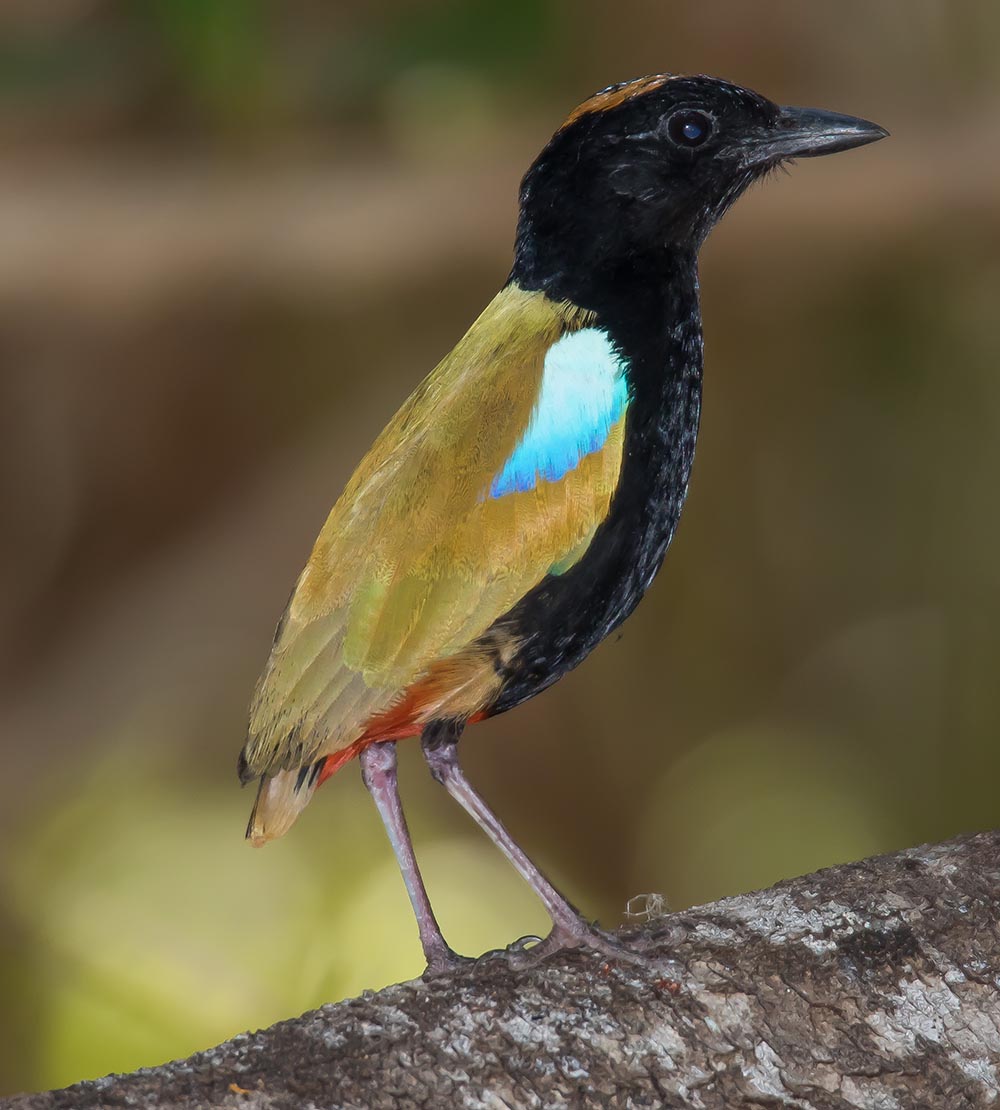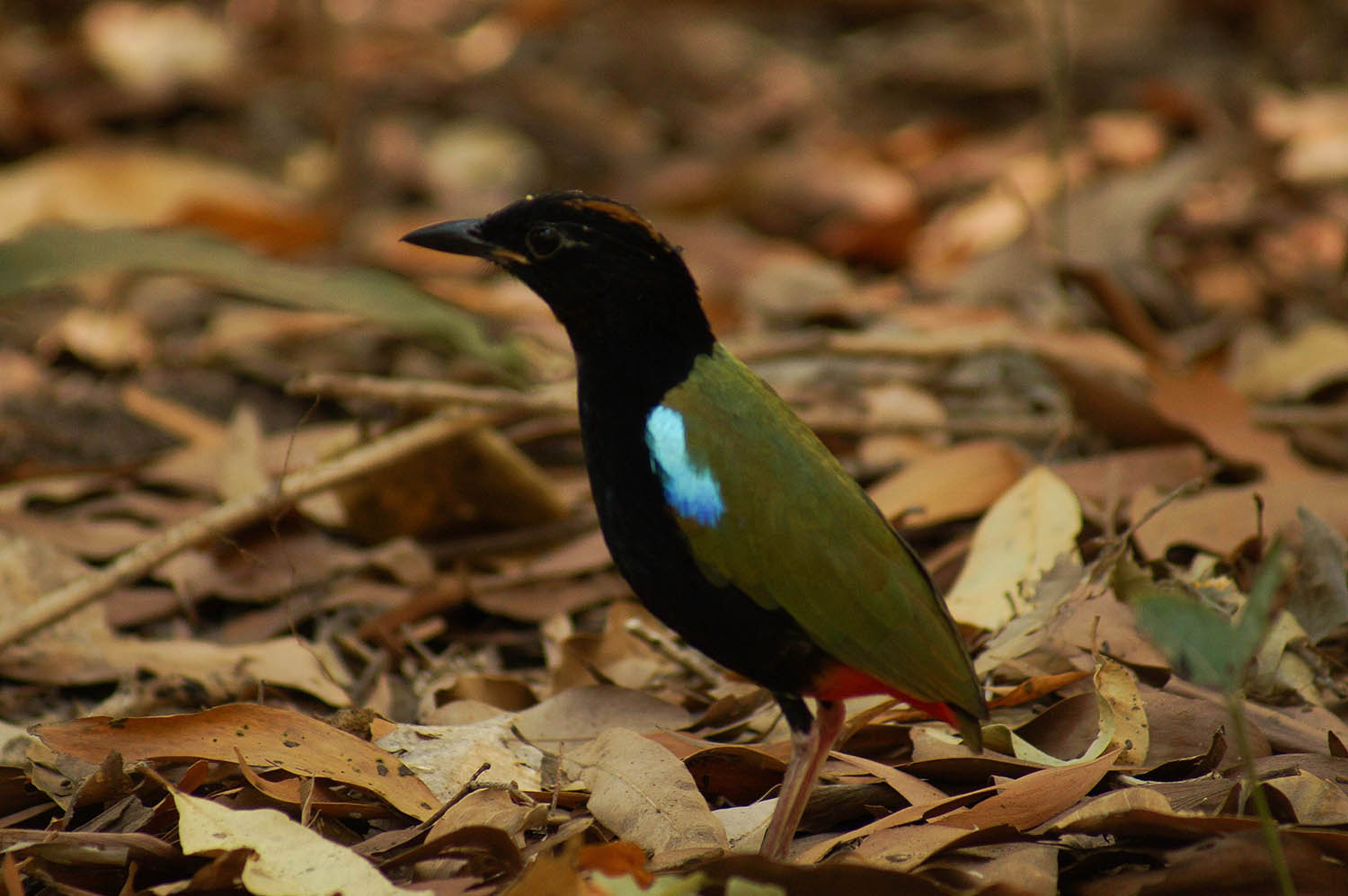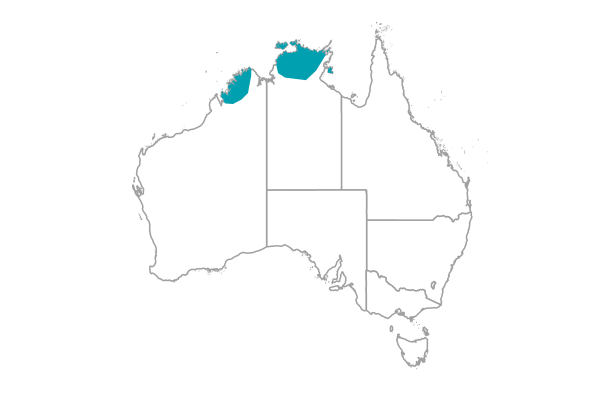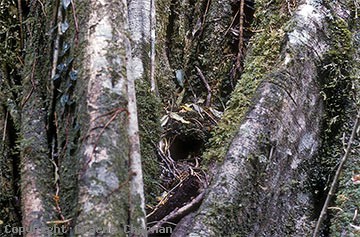A small native bird with a black head and breast, electric blue shoulder patches and white wing spots. Upperparts are bright olive-green, sometimes a silvery green-blue. The only pitta in the Darwin region, and Australia’s only pitta with a black head and breast.
Its nest is loose, interwoven sticks and dead vines, usually dome-shaped but can be a cup, with entrance at side or near top. It can be in a fork, on a branch, against butress root on the ground, from ground level to 8 metres above.
Size
16 - 18 cm
Behaviour
Call
A brisk ‘we-wik-to-wik’ and high-pitched ‘kiew’.
Diet
Feeds on a wide range of invertebrates, and occasionally on frogs and small skinks.
Breeding
Breeding occurs from late October to early March. Pairs are monogamous, and can raise two broods in a single season. Four eggs are lain that are incubated for 14 days. Both sexes share maternal responsibilities.
Field Guide
Improve your identification skills. Download your Rainbow Pitta field guide here!





